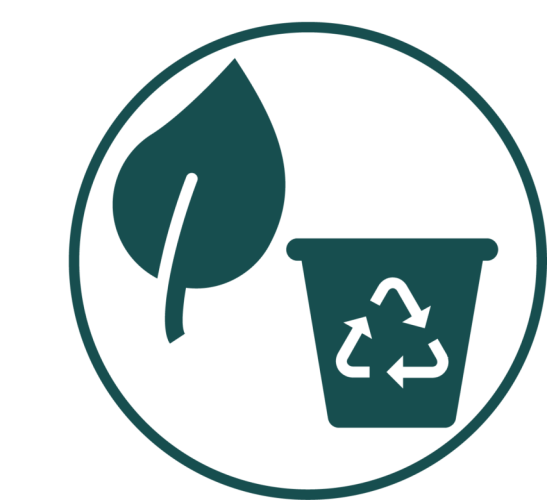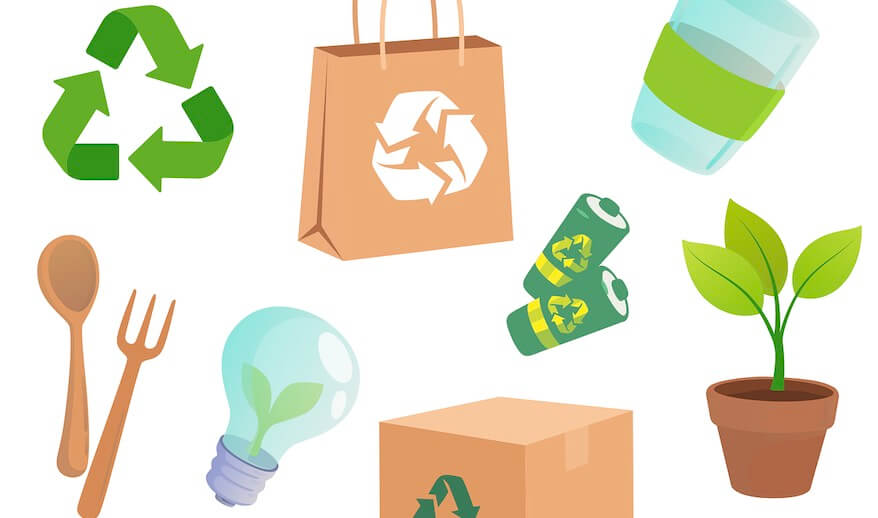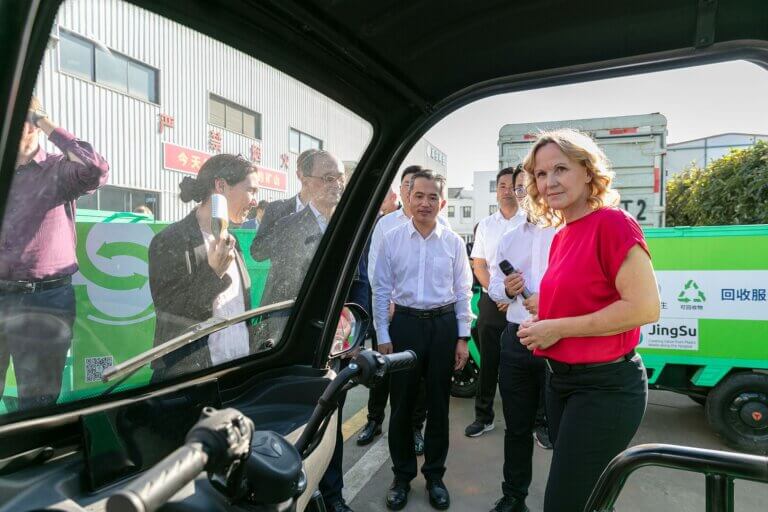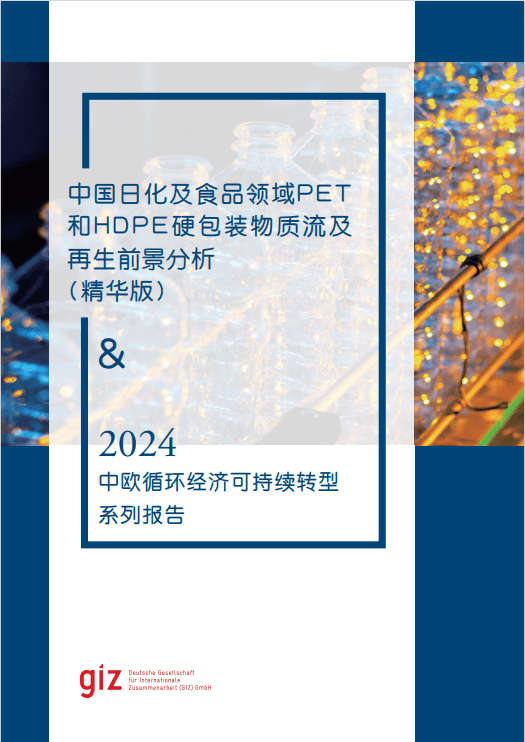The World Environment Day is marked on June 5th by the United Nations each year. This year’s theme, “Only One Earth”, is special because it was the theme for the first World Environment Day 50 years ago in Stockholm, Sweden. After half a century of environmental protection efforts, the call-back theme is a reflection to the past and expectation to the future.

Under the present circumstances of climate change and resource shortage, circular economy brought us a novel approach to environmental issues. Do you really understand circular economy? Let’s take a look at a mini quiz!
Question 1:

How many layers does the packaging above consist of?
- A. One layer
- B. Two layers
- C. Equal or more than three layers
Answer: C
In order to ensure the food packaging to be securely sealable, transported, protected from sunlight and oxidization, and convenient for marking purposes, plastic food packaging widely adopts a multilayered sandwich structure with different plastic (e.g. PET, PE) as the breads and metal coating in between. Given the complexity, the large quantity, and the small individual mass of these packaging, the recycling and circulation of them require well-established collection system and advanced recycling technology.
Question 2:
When you order a takeaway, you might receive following objects, which of them can be recycled?
- A. The packaging bag, including non-woven bag, thermal takeaway bag, paper bag, and plastic bag
- B. Takeaway food container, including plastic container and paper container
- C. Cutlery, including bamboo cutlery, wooden cutlery, and plastic cutlery
Answer: ABC
In fact, most of the packaging remnants from takeaways are valuable to recycle. Bags with plain-material structure like plastic and paper packaging bags can be recycled directly. Bags with composite materials like thermal takeaway bag can also be recycled after proper separating procedures. Currently in the market, approximately 70% to 80% of the producers choose to use Polypropylene (PP), Polystyrene (PS) and Polyethylene Terephthalate (PET) to produce takeaway boxes, among which PP prevails and with much higher recycling values than we thought.
Question 3:

PBAT is one of the most commonly used materials in biodegradable mulch films, among the following typical types of soils in the four major facility farming areas in China, which type of soil has the best degradation capacity for PBAT?
- A. Lou soil (西北塿(lǒu)土) in Northwestern regions
- B. Tidal soil in Northern regions
- C. Laterite soil in Southern regions
- D. Chernozem/black soil in the Northeastern regions
Answer: A
According to the research conducted by Teng Ying’s group from Institute of Soil Science, Chinese Academy of Sciences, the mineralization rate of PBAT was 16%, 9%, 0.3%, and 0.9% respectively after 120 days of burial.
Question 4:
Under the scenario of some key assumptions (e.g., setting the thickness of conventional PE mulch film as 35μm, the mineralization rate of biodegradable mulch film is 90%, the field recovery rate is 90% and the soil contamination rate of collected films equals to 45%, all the collected mulch film could be reutilized), which type of the following mulch film has minimum negative environmental impacts?
- A. PE mulch film consists of 100% recycling materials
- B. Traditional PE mulch film
- C. Biodegradable mulch film
Answer: A
According to the research from the European Union, under given circumstances (different assumptions would lead to different results), PE mulch film consists of 100% recycling materials is more environmentally friendly than the other two types of mulch films which share similar environmental impacts to some extent. Currently, however, under Chinese regulations, recycled materials could not be utilized to reproduce mulch films. Even in EU countries where recycled materials are allowed to be added into the production of mulch films, the addition rate of recycled materials is merely around 30%.
Question 5:
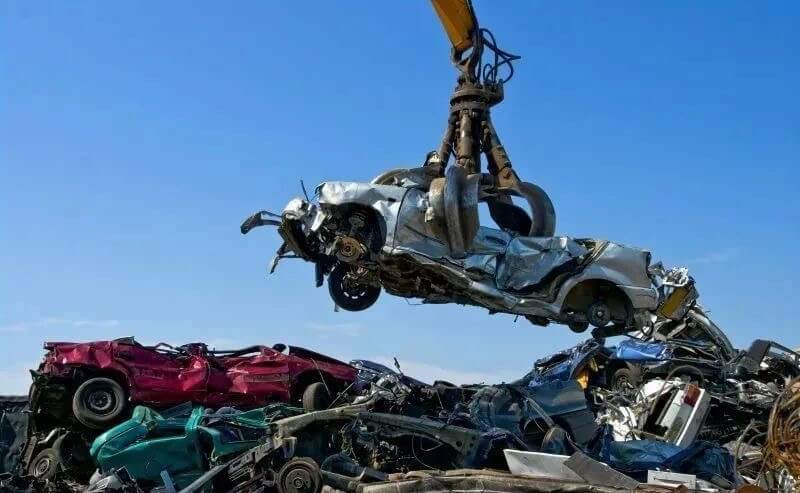
What’s the common order of dismantling process of End-of-Life Vehicles (ELVs) in recycling facilities?
- A. Drain all operational liquids
- B. Crushing and shredding
- C. Check the damage of the ELV
- D. Remove wheels, glass, and other outer parts
- E. Remove battery manually
- F. Disassemble electronic devices and other inner parts
- G. Remove the five major assemblies (engine, steering gear, transmission, front and rear axles, and the car frame)
Answer: C—E—A—D—F—G—B
China had 18 million ELVs in 2020. Merely 30% ~ 40% of them, however, entered the formal dismantling factories. Inappropriate managed dismantling and recycling procedures of ELVs would be detrimental to the environment and result into safety issues. The common ELVs dismantling processes in general are as follows:
- Check the damage of the ELV
- Remove battery manually
- Drain all operational liquids (e.g., motor, transmission and hydraulic systems oils, liquids from coolant, brake, and air conditioning systems etc.)
- Remove wheels, glass, and other outer parts
- Disassemble electronic devices and other inner parts
- Remove the five major assemblies (engine, steering gear, transmission, front and rear axles, and the car frame)
- Crushing and shredding
Question 6:
After the power batteries of electric vehicles reach effective service lives and get removed, they can continue to be utilized in multiple fields depending on the remaining battery capacity (battery cascade utilization). Which of the following remaining battery capacity does not match with the field to reutilize it?
- A. 80%, electric bicycles
- B. 60%, Communication base station backup power source
- C. 40%, Lighting source
- D. 20%, Photovoltaic power station energy storage
Answer: D
- When the battery capacity of the vehicle to be less than 80%, the vehicle is required to get a replacement of its battery to ensure enough battery life.
- When the remaining battery capacity is between 60% and 80%, the battery can be utilized as backup energy source for low-speed electric vehicles (e.g., electric bicycles), grid energy storage (e.g., Photovoltaic power station energy storage), mobile car charging station, and Communication base station backup power source etc.
- When the remaining battery capacity is between 20% and 60%, the battery packs would require professional processors to dissemble them into battery cells and reassemble. The reassembled batteries can be used in lighting and backup energy source for family usages.
- When the remaining battery capacity is under 20%, the battery needs to be properly dissembled and recycled, recycling useful accessories and refining metal elements.
Question 7:

The global greenhouse gas (GHG) emission from fashion industry >= ( )+( )
- The sum of GHG emission from domestic air transport and land transport
- The sum of GHG emission from international fights and maritime shipping industry
- The sum of GHG emission from regional flights and air transport
Answer: B
According to EU, 10% of the global GHG emission annually is caused by clothing and footwear production, which outnumbers all international flights and maritime shipping combined.
Question 8:
When you want to get rid of a “unwanted” cloth you have, what should you do?
- Consider remaking the cloth into new designs.
- Exchange clothes with friends and try “vintage” fashion.
- I don’t really care. I will just throw it away.
Answer: AB
We encourage you to take A and B options into action. Globally, customers are getting rid of clothes which worth 460 billion US dollars annually. Some clothes are only worn 7-10 times. When you consider throwing a cloth away, please consider remaking it into new designs or vintage pieces to extend its life cycle.
